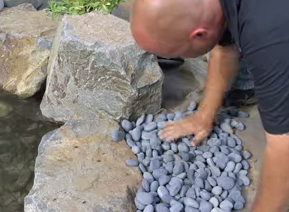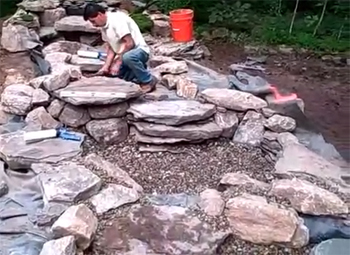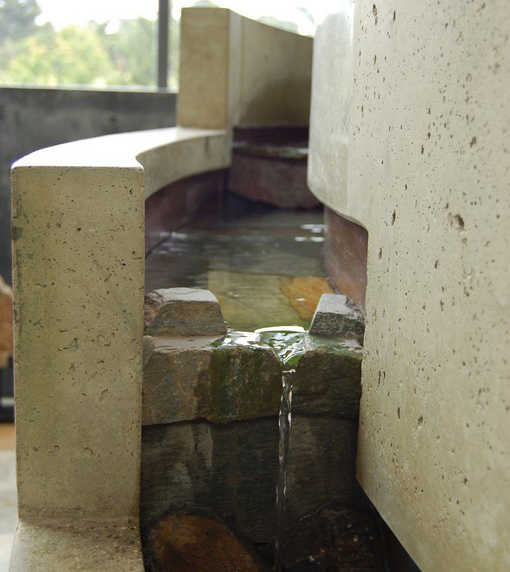naturalistic
As I mention at the start of this video, setting the edges is just about my favorite part of the pond-installation process. As is true with juggling and placing big rocks, there's an art to getting things just right and making the setting look as natural as possible - that is, as though the pond not only belongs there but has also been there for uncounted years.. As the video discusses, there are
Of all the innovations related to pond technology, design and installation I’ve encountered in recent years, the most curious one to me has always been the “pondless waterfall.” In an industry where the highest aspiration is always toward achieving truly naturalistic results, having the water reach the bottom and percolate into a bed of stones rather than into a large, attractive pool of water leaves the designer or installer with the challenge of making the project work visually (and emotionally) in what can clearly be perceived as an artificial context. To overcome these perceptions,
By Fu-Tung Cheng I’ve never been entirely comfortable with the term “decorative concrete.” To me, the pairing of the words has always implied that one merely applies material over a substrate in the way a baker might apply icing to decorate a cake. Instead, I see concrete as inherently profound. More than appliqué, it is a medium that has long been used functionally as well as expressively. In my own case, I feel far more creatively engaged in my work when I merge my thinking about those dual potentials of function and art. Historically, in fact, I believe that when the two become an inseparable one, we recognize and celebrate these works as rising to the level of great design. In my own case, I began using concrete as an expressive medium a few decades back, when I was among the pioneers in designing and installing concrete countertops in contemporary kitchens. As both designer and builder, by the year 2000 I had
Despite our fondest desires, it’s quite inevitable that most of the things we humans design and build are impermanent and will change. That’s particularly true of the greenery we place in and around our gardens and watershapes, simply because plants grow and gradually alter the settings they surround or inhabit. There’s a measure of melancholy in this evolution: As designers and installers of these spaces, we’re left to recognize that in most cases we will never see them at their best and most beautiful. Yet that’s as it should be, because any living work of art will continue to develop and improve long after it is technically “completed” by our hands. There’s also great joy in creating naturalistic watershapes and garden spaces, because I see the art of finishing as an exercise in setting the table for the future. In fact, I see this as being remarkably empowering: By participating in
We recently completed a project that truly thrilled a pair of well-traveled, highly educated clients: It was a large, complex waterfall-and-pond composition in the sloping backyard of an upscale home in an affluent southern California neighborhood. There were a number of reasons why the project worked so well, but if I had to break it down to one thing more than any other, it had to do with the range of edge treatments we used within the available space. On the side nearest the house, we established a clean lawn-meets-water detail – very disciplined in appearance and obviously man-made. Directly across the pond was a set of rugged waterfalls – much wilder and basically untamed. Bracketing those features, we filled shallow areas with emergent plants and hiding places for fish and frogs. It was a well thought out plan, certainly right for the space. But I know for a fact that

















